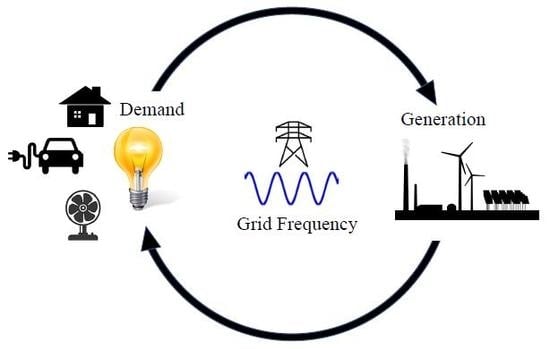Assessment of Commercial Building Lighting as a Frequency Regulation Resource
Abstract
:1. Introduction
1.1. Motivation
1.2. Regulatory Organizations
1.3. Market Overview
1.4. Ancillary Services
- FR involves finer, real-time adjustments of supply or demand to maintain grid stability on the order of seconds.
- Voltage control maintains grid voltages by injecting or absorbing reactive power [7].
- Spinning reserves are resources that are already running on the grid (synchronized to the grid’s frequency) and can respond in well under 10 min to disturbances in demand or supply.
- Supplemental reserves are the third line of defense, after the FR and spinning reserves, and can be offline resources that are able to respond within 10 min.
- Replacement reserves are used to restore spinning and supplemental reserves within 30 min after an event [7].
2. Frequency Regulation
2.1. Frequency Balancing Fundamentals
2.2. Resource Qualifications for FR
2.3. Conventional and Novel FR Resources
3. Lighting as an FR Resource
3.1. Relevant Research
- For lighting resources to compete in ancillary services $1.8 billion and 56 million dimming ballasts would be needed to outfit enough commercial buildings.
- With proper control systems, lighting in large buildings in California could provide as much as 450 MW of regulation up or down, an amount that exceeds CAISO’s current regulation requirement of 350 MW [19].
3.2. Limitations: Human Comfort
3.3. Methodology
- The model of a lighting resource will be described (specifically the types of lights and required controls).
- The capacity of the theoretical resource will be evaluated using lighting standards and the conclusions on detectable light levels as discussed in Section 3.2.
- The flexibility will be examined using a sample AGC signal and information on the control technology. The technical computing environment Matlab and Simulink will be used to implement ramp filters and expected communication delays on the AGC signal to produce the expected output of the hypothetical lighting resource.
- The performance metrics discussed in Section 2.2 will be used to evaluate the resource and determine if it meets the standards for an FR supplier.
3.4. First Order Model of a Lighting FR System
3.5. Evaluation of FR Performance
3.6. Relevant Technologies
3.7. Lighting Resource Potential
4. Discussion and Recommendations
Author Contributions
Funding
Conflicts of Interest
References
- Borlase, S. Smart Grids: Infrastructure, Technology and Solutions; Taylor & Francis: Boca Raton, FL, USA, 2012. [Google Scholar]
- Regulatory Assistance Project. Electricity Regulation in the US: A Guide; Regulatory Assistance Project: Monpelier, VT, USA, 2011. [Google Scholar]
- Hoff, S. U.S. Electric System is Made Up of Interconnections and Balancing Authorities. 2020. Available online: https://www.eia.gov/todayinenergy/detail.php?id=27152 (accessed on 30 January 2020).
- EIA. About 60 % of the U.S. Electric Power Supply is Managed by RTOs; EIA: Washington, DC, USA, 2011. [Google Scholar]
- FERC. Regional Transmission Organizations (RTO)/Independent System Operators (ISO); FERC: Washington, DC, USA, 2019. [Google Scholar]
- PJM. PJM Learning Center: PJM Structure; PJM: Norristown, PE, USA, 2016. [Google Scholar]
- Kirby, J.B. Frequency Regulation Basics and Trends; Technical Report; Oak Ridge National Laboratory: Oak Ridge, TE, USA, 2004. [Google Scholar]
- Hodge, D.B.M. Lecture 10: Transmission System Operations; University Lecture; University of Colorado Boulder: Boulder, CO, USA, 2016. [Google Scholar]
- Zhao, P.; Henze, G.P.; Brandemuehl, M.J.; Cushing, V.J.; Plamp, S. Dynamic frequency regulation resources of commercial buildings through combined building system resources using a supervisory control methodology. Energy Build. 2015, 86, 137–150. [Google Scholar] [CrossRef]
- NERC. Balancing and Frequency Control; NERC: Atlanta, GA, USA, 2011. [Google Scholar]
- Hiskens, I. Introduction to Power Grid Operation; University Lecture; Michigan Engineering: Florence, Italy, 2013. [Google Scholar]
- Pilong, C. PJM Manual 12: Balancing Operations; PJM: Norristown, PE, USA, 2016. [Google Scholar]
- Zhou, Z.; Levin, T.; Conzelmann, G. Survey of U.S. Ancillary Services Markets; Technical Report; Argonne National Laboratory: Argonne, IL, USA, 2016.
- ISO-NE. Internal Market Monitor: Spring 2016 Quarterly Markets Report; ISO-NE: Holyoke, MA, USA, 2016. [Google Scholar]
- Dragoon, K.; Papaefthymiou, G. Power Systems Flexibility Strategic Roadmap; Ecofys: Berlin, Germany, 2015. [Google Scholar]
- EIA. In FAQ: How Much Electricity is Used for Lighting in the United States? EIA: Washington, DC, USA, 2016.
- Donnelly, M.; Mattix, S.; Trudnowski, D.; Dagle, J. Autonomous Demand Response for Primary Frequency Regulation; Technical Report; Pacific Northest National Laboratory: Berkeley, CA, USA, 2012.
- Rubinstein, F.; Xiaolei, L.; Watson, D. Using Dimmable Lighting for Regulation Capacity and Non-Spinning Reserves in the Ancillary Services Market. A Feasibility Study; Technical Report; Lawrence Berkeley National Laboratory: Berkeley, CA, USA, 2010.
- Tacka, N. RTO or ISO Regulation Market Comparison. 2016. Available online: https://www.pjm.com/-/media/committees-groups/task-forces/rmistf/20160413/20160413-item-03-rto-iso-benchmarking.ashx (accessed on 30 January 2020).
- Newsham, G.; Birt, B. Demand-responsive lighting—A field study. J. Illum. Eng. Soc. 2010, 6, 203–226. [Google Scholar] [CrossRef]
- Kryszczuk, K.M.; Boyce, P.R. Detection of slow light level reduction. J. Illum. Eng. Soc. 2002, 31, 3–10. [Google Scholar] [CrossRef]
- Akashi, Y.; Neches, Y. Detectability and acceptability of illuminance reduction for load shedding. J. Illum. Eng. Soc. 2004, 33, 3–13. [Google Scholar] [CrossRef]
- Newsham, G. Detection and acceptance of demand responsive lighting in offices with and without daylight. J. Illum. Eng. Soc. 2008, 4, 139–156. [Google Scholar] [CrossRef] [Green Version]
- Akashi, Y. Is it okay to dim your lights for load shedding? J. Illum. Eng. Soc. 2004. Available online: https://www.yumpu.com/en/document/read/24170216/rs-1-lda-covps-illuminating-engineering-society/6 (accessed on 30 January 2020).
- Leccese, F.; Salvadori, G.; Rocca, M.; Buratti, C.; Belloni, E. A method to assess lighting quality in educational rooms using analytic hierarchy process. Build. Environ. 2020, 168, 106501. [Google Scholar] [CrossRef]
- ASHRAE/IESNA. Standard 90.1-2007: Table 9.6.1 Lighting Power Densities Using the Space-by-Space Method. 2007. Available online: https://www.ashrae.org/File%20Library/Technical%20Resources/Standards%20and%20Guidelines/Standards%20Addenda/90-1-2007/90_1_2007_bx_by_ca_cb_cc.pdf (accessed on 30 January 2020).
- Benner, S. Performance, Mileage and the Mileage Ratio; PJM: Norristown, PE, USA, 2015. [Google Scholar]
- Lutron. Fluorescent Dimmming Systems: Technical Guide; Lutron: Coopersburg, PA, USA, 2011. [Google Scholar]
- Lutron. Lutron Energy-Saving Products: Retrofit Solutions; Lutron: Coopersburg, PA, USA, 2011. [Google Scholar]
- MacDonald, J.; Cappers, P.; Duncan, C.; Kiliccote, S. Demand Response Providing Ancillary Services: Comparison of Opportunities and Challenges in the US Wholesale Markets. 2012. Available online: https://pdfs.semanticscholar.org/ddd5/758bd434a7341d155a9f7fc92fc796b0485d.pdf (accessed on 30 January 2020).
- Patterson, M. Demand Response in the ERCOT Markets; Department of Energy: Washington, DC, USA, 2011. [Google Scholar]
- CAISO. Q1 2016 Report on Market Issues and Performance; CAISO: Folsom, CA, USA, 2016. [Google Scholar]
- FERC. FERC Order 719: Wholesale Competition in Regions with Organized Electric Markets; FERC: Washington, DC, USA, 2008. [Google Scholar]
- Rahimi, F.; Ipakchi, A. Demand response as a market resource under the smart grid paradigm. IEEE Trans. Smart Grid 2010, 1, 82–88. [Google Scholar] [CrossRef]
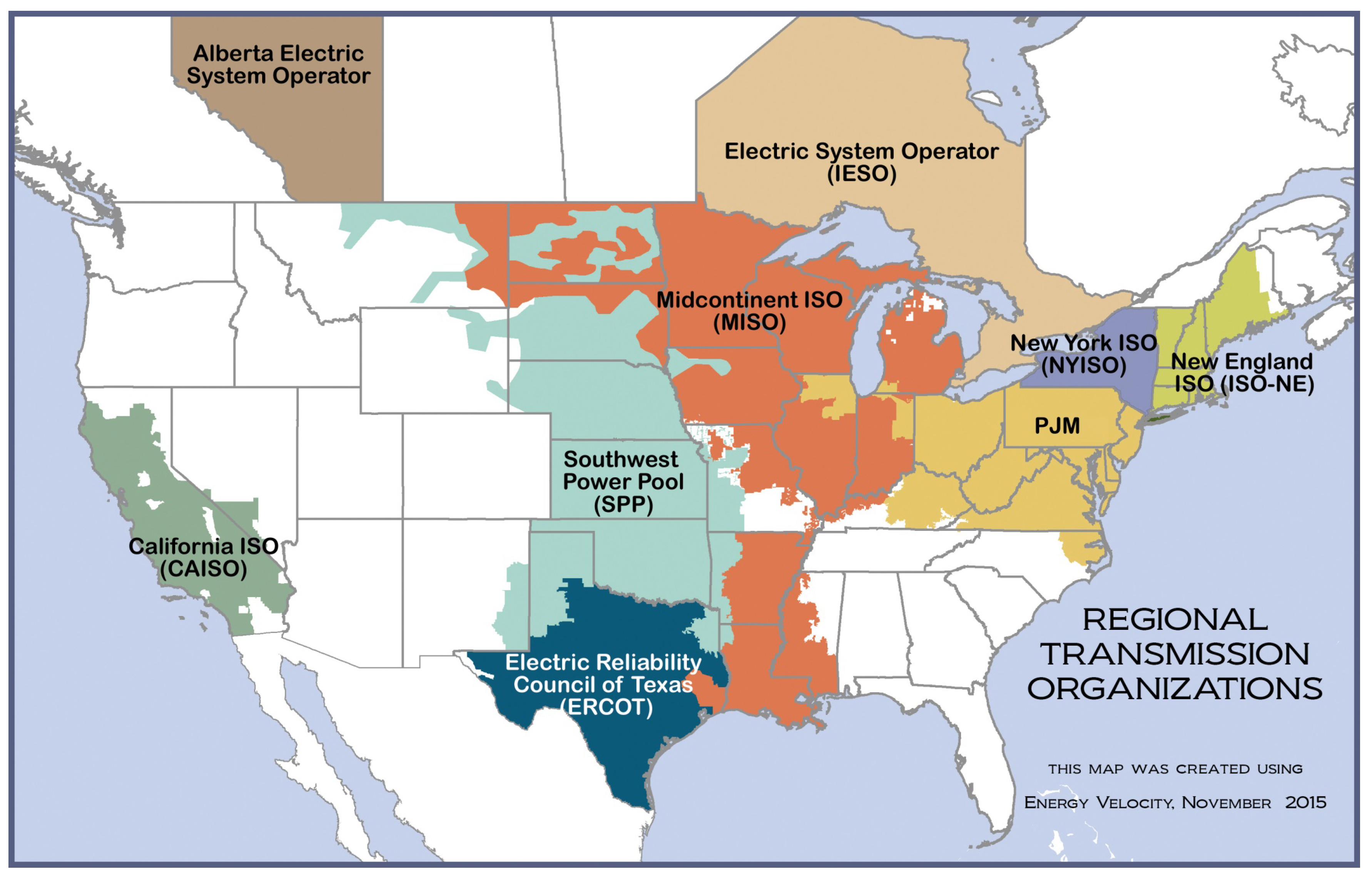
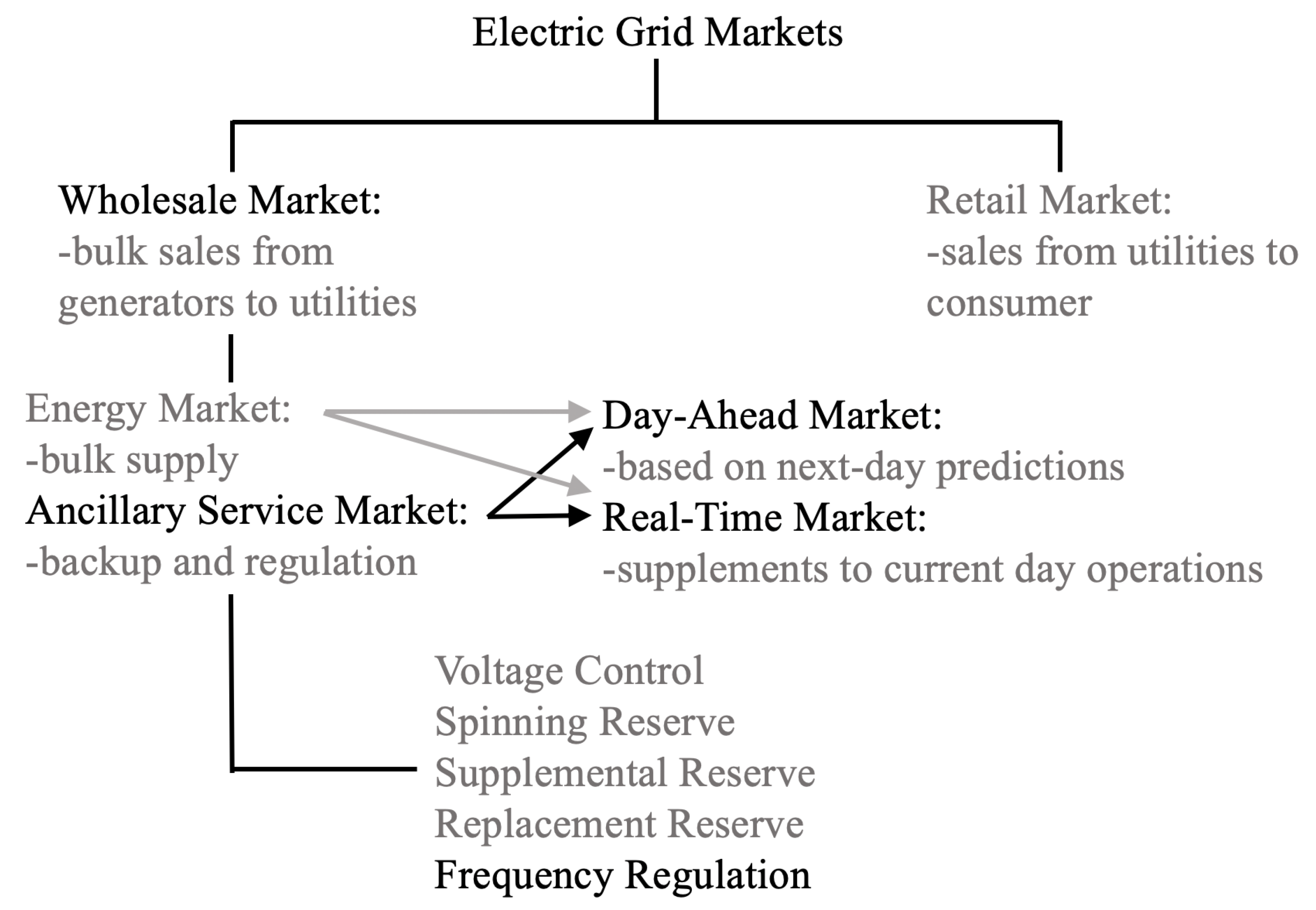

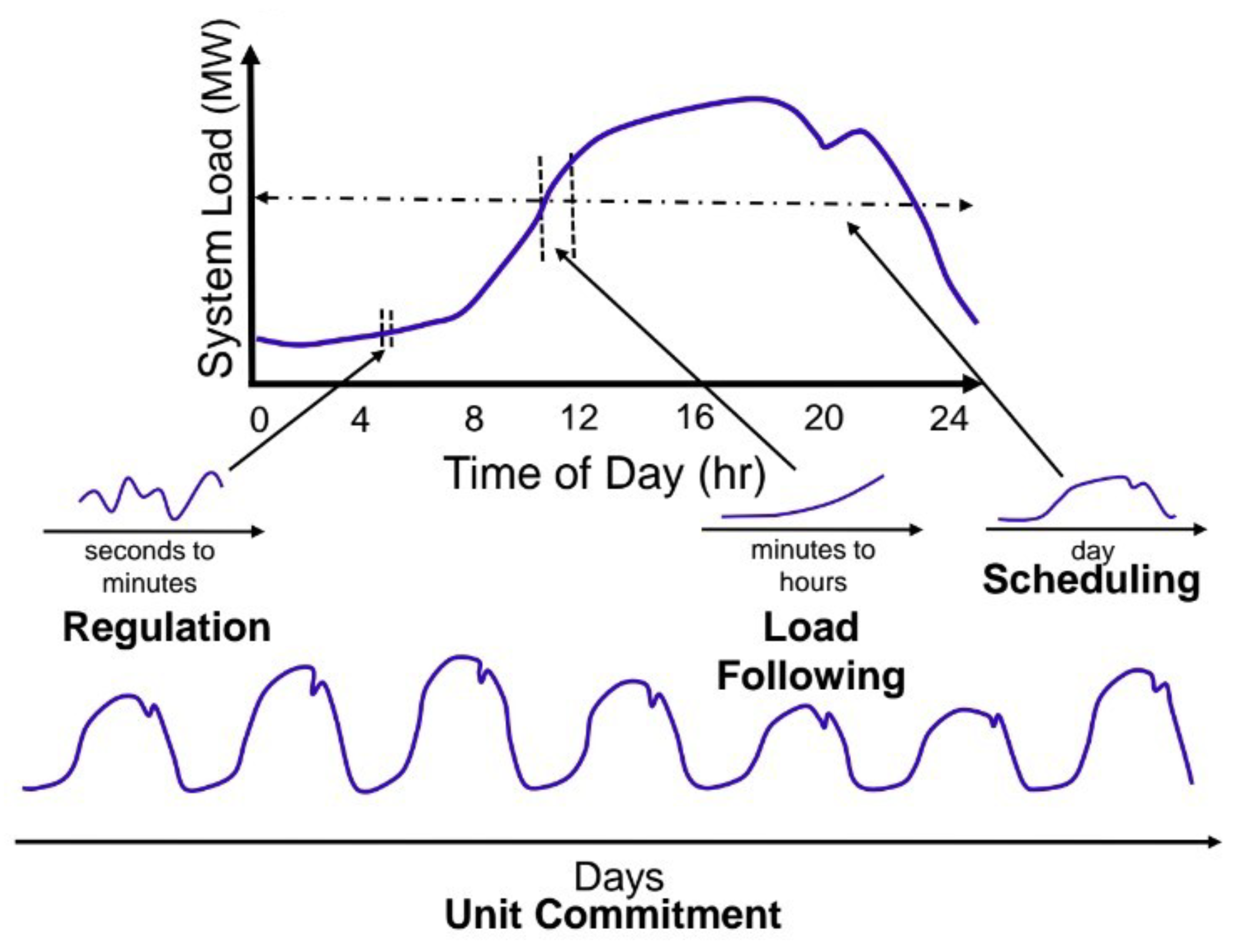
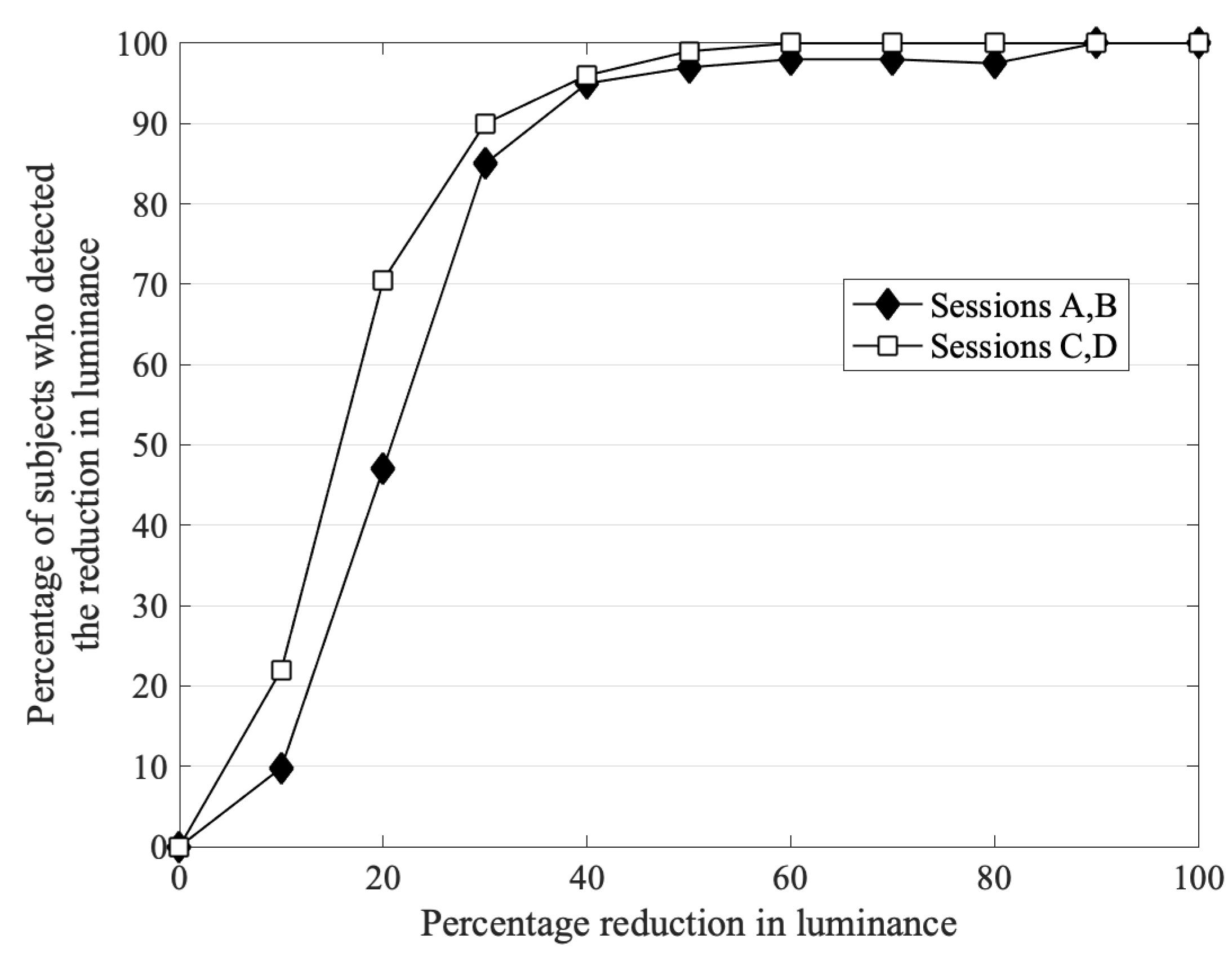
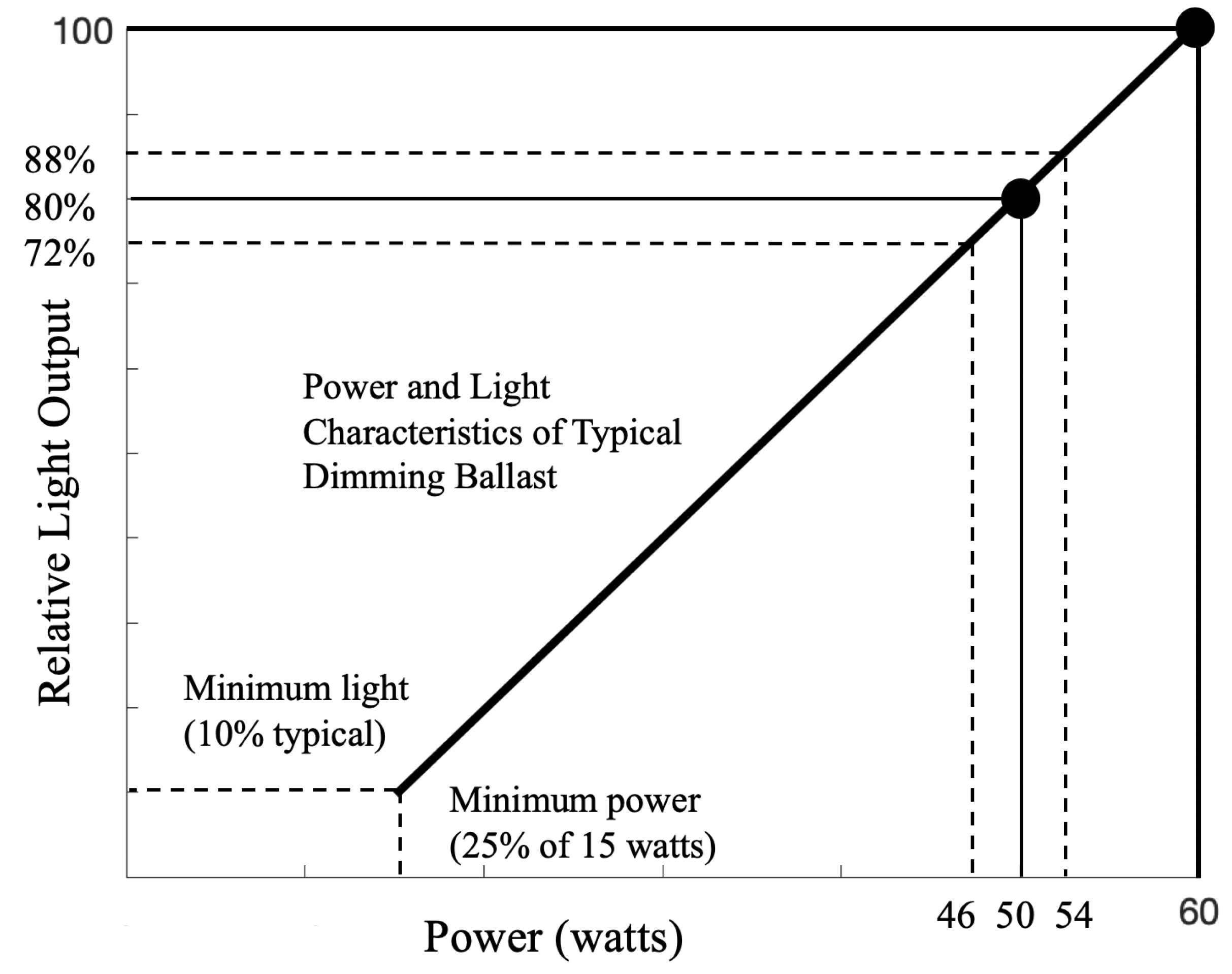
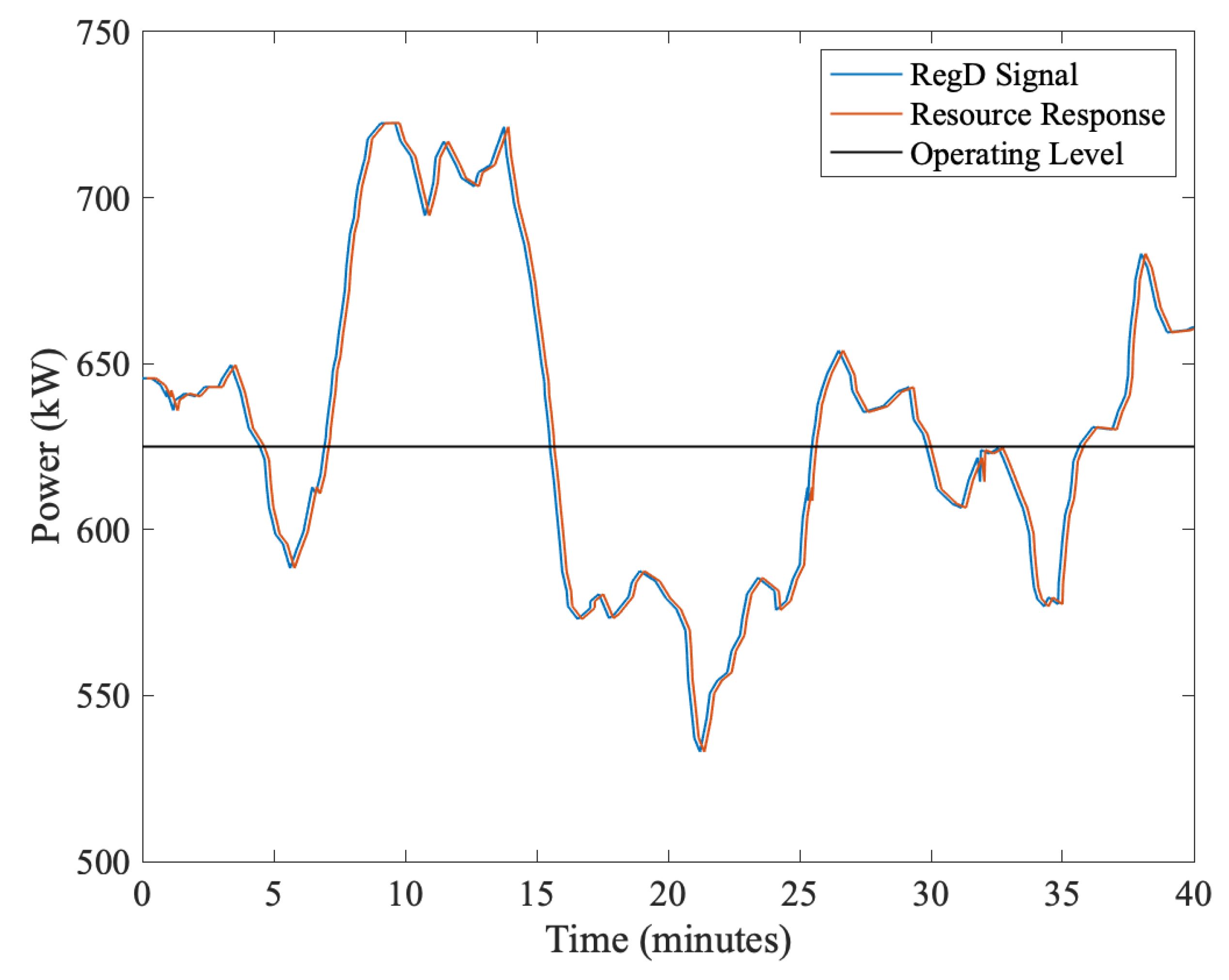

| Variable | Value |
|---|---|
| Delay | 0.9660 |
| Accuracy | 0.9667 |
| Precision | 0.9993 |
| Performance | 0.9773 |
| RTO | Requirements | Resources | Market Prices |
|---|---|---|---|
| PJM | 700 MW (peak), 525 MW (off-peak) | generators, storage, DR | $30.73/MWh |
| ISO NE | average 60 MW | generators only | $25.28/MWh |
| MISO | average 400 MW | mostly generators, | $7.49/MWh |
| small % battery and DR | |||
| ERCOT | RegUp: 459 MW | generators (CC), DR | RegUp $10.25/MWh |
| RegDown: 456 MW | RegDown $5.35/MWh | ||
| SPP | average 350 MW | mostly generators | RegUp $9.29/MWh |
| dispatchable wind | RegDown $8.93/MWh | ||
| CAISO | average 350 MW | generators, storage and DR | RegUp $4.64/MWh |
| RegDown $3.75/MWh | |||
| NYISO | average 220 MW | generators, storage, DR | $8.79/MWh |
© 2020 by the authors. Licensee MDPI, Basel, Switzerland. This article is an open access article distributed under the terms and conditions of the Creative Commons Attribution (CC BY) license (http://creativecommons.org/licenses/by/4.0/).
Share and Cite
Karpilow, A.; Henze, G.; Beamer, W. Assessment of Commercial Building Lighting as a Frequency Regulation Resource. Energies 2020, 13, 613. https://doi.org/10.3390/en13030613
Karpilow A, Henze G, Beamer W. Assessment of Commercial Building Lighting as a Frequency Regulation Resource. Energies. 2020; 13(3):613. https://doi.org/10.3390/en13030613
Chicago/Turabian StyleKarpilow, Alexandra, Gregor Henze, and Walter Beamer. 2020. "Assessment of Commercial Building Lighting as a Frequency Regulation Resource" Energies 13, no. 3: 613. https://doi.org/10.3390/en13030613




